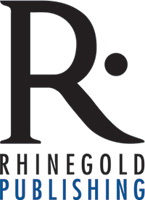
Shakespeare
£14.95
Unit 6 of the Edexcel A2 examination is a two-and-a-half-hour exam, constituting 15% of the total A2. The paper is divided into two sections. Section A is a thorough examination of a play from a director’s viewpoint, with the prescribed texts being Trojan Women by Euripides and The Beggar’s Opera by John Gay. Section B requires students to research the production history of a play originally written and produced between 1575 and 1720.
They must compare and contrast different directors’, designers’ and performers’ interpretations of the play, as well as investigating the diverse social, cultural and historical contexts surrounding various productions of the work. It is also necessary for students to evaluate the effectiveness of different productions of the play and analyse the ways in which the medium of drama has been used to communicate key ideas within the play to an audience. Appropriate playwrights to use from this period include Ben Jonson and Christopher Marlowe, but the most obvious choice for this section is Shakespeare.
There is an almost exhaustive amount of research and writing to be found on him and the
original performance conditions of his work and, in addition to this, live performances of Shakespeare are frequent, meaning it won’t be difficult to find a local performance of a Shakespeare play around the time you need to see it.
Assessment objectives:
According to the Edexcel specification students must:
- Develop and shape ideas for an individual production of the
play - Use the language of drama and theatre to interpret the play
- Make artistic and intellectual decisions based on a detailed
knowledge of the text of the play and an understanding of the
social, cultural and historical contexts of the play - Justify the choice of ideas and the ways in which the medium
of drama is being used - Communicate ideas, opinions and decisions to designers and
performers
Students must research three different performances of a play using secondary research sources and one performance of it using the primary source of a live performance, supplemented with published reviews of the chosen play.
The four areas of study should cover the following periods:
- The original 16th/17th-century performance conditions
- 18th/19th-century performance conditions
- 20th-century performance conditions (specifically film)
- 21st-century performance conditions (specifically a live piece of
theatre).
Students are allowed to take a research log of up to ten sides of A4 into the exam, however they may take in less if appropriate. It is better to have five sides of clear, concise, useful notes rather than ten sides of verbose ones, which they have to plough through under exam conditions to find what they are looking for. Students’ notes should be divided into four appropriate sections.
Number of schemes: n/a

